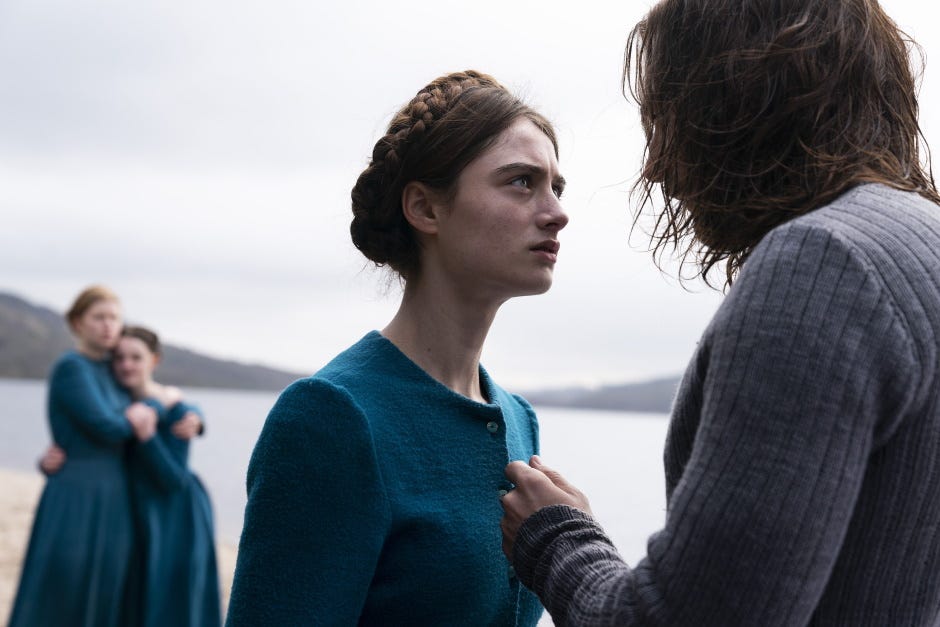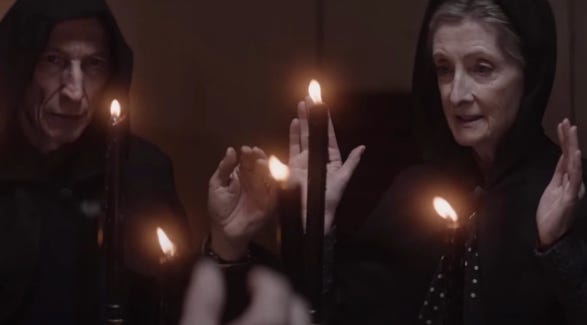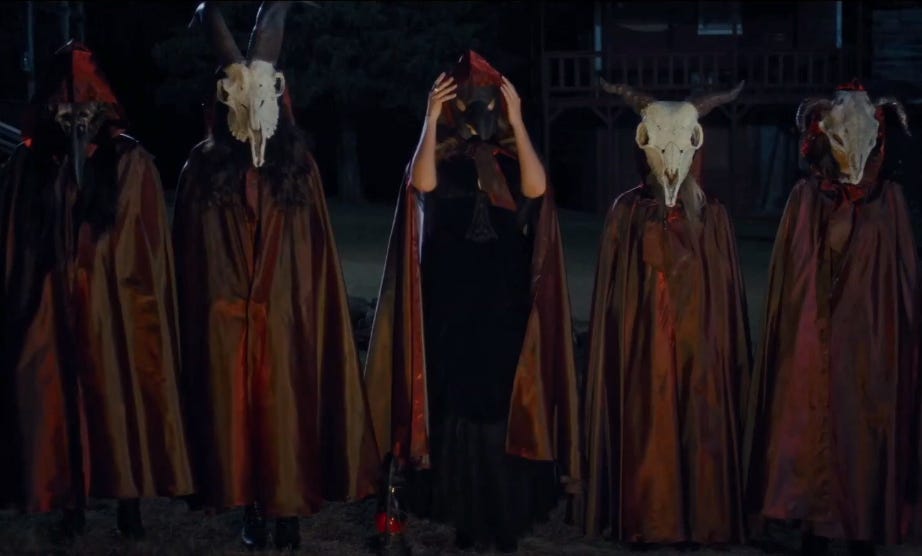In keeping with how generally weird these times are that we live in, viewers taking comfort in horror films and TV shows has been a distinctive coping mechanism during the pandemic, when we’re doing our best to stay home. Of course, the last four years of horror under Trump have primed us for this approach to survival, and filmmakers are responding with a flurry of new horror, to the extent that it’s almost, well, too many horror films. It’s impossible to see them all, and I like to seek out things of high quality or squarely in my wheelhouse, so I gravitate towards witchy or occult horror, or stories with a pagan theme.
So here are a few films that came out in 2020 I found worthy of my yearly round up (which I usually write up on my blog, but this new substack with the same title will be existing alongside that now). One thing these films have in common is a focus on strong, complicated female characters or female relationships. this is always gratifying to see and let’s hope it becomes the new normal. Most of these films are available now via streaming, and as we move into 2021, with the pandemic still raging in the United States, expect new films to be released digitally and not in theatres. Witches and the occult are hot topics now, to put it mildly, so expect to see a lot more movies and TV in this horror sub-genre.
The Craft: Legacy (written and directed by Zoe Lister-Jones)
This hotly-awaited reboot was somewhat disappointing, although it did have some aspects I found appealing. The cast was excellent, especially Caelee Spaeny as Lily, the newcomer modeled on Robin Tunney’s Sarah in 1997’s original film The Craft, and Nicholas Galitzine as her love interest. The witchy aesthetic felt authentic and magical without being steeped in special effects: plenty of elemental colors and textures, and a naturalistic array of altars and magical effects. It needed to be a bit longer, to flesh out character backstories: I felt I had no real way to understand who these young witches were, what drew them to this path. There’s a fascinating subplot involving David Duchovny in a delicious role as a charismatic MRA author and definite bad guy…but again, I wanted so much more. The new Blu-Ray release contains some deleted scenes, including scenes that delve into at least one of the young witch’s cultural heritage: I wish this had been included in the original release. I wrote about this film, and the cultural impact of The Craft, for Time magazine and Polygon, and had a lovely interview with the director, who worked with three occult advisors. What We Need Next: a sequel that shows us where Nancy, Rochelle, Bonnie and Sarah have been for the last 20-some years.
The Other Lamb (written by Catherine S. McMullen, directed by Malgorzata Szumowska)
A gorgeous, chilling film that has gruesome touches of folk horror and hints of The Handmaid’s Tale in its themes and visuals. A strange pagan cult lives on a wooded compound and farm near the sea: one man known as The Shepherd, a couple of dozen women and their daughters, and a number of sheep, all under his spell and sexual domination. Featuring stunning performances and a provocative screenplay, this felt allegorical but also terrifyingly plausible. A very moving expression of the bonds women forge when they realize they have power in numbers, and a common cause in their oppression and anger.
Anything for Jackson (written by Keith Cooper, directed by Justin G. Dyck)
This clever and often funny film portrays an elderly couple using occult magic to engineer a “reverse exorcism” by kidnapping a pregnant young woman and using her newborn to reincarnate the soul of their dead grandson. The film’s tone veers between archly satirical and earnestly frightening. Some “real” Satanists are portrayed with excellent detail and humanity. Don’t try this at home, kids.
We Summon the Darkness (written by Alan Trezza, directed by Marc Meyer)
Like 2019’s Satanic Panic, this film is a funny, tongue-in-cheek look at Satanism and the amateur theatrics that often surround it. This is set in the 1980s and follows three heavy metal groupies (including the fantastic Alexandra Daddario as their ringleader) who try to seduce some unsuspecting fans at a concert and sacrifice them in a ritual to appease their fake Satanic guru (played by Johnny Knoxville, in an inspired bit of casting). It’s full of great period details, very good performances, and is engaging to watch because the unhinged characters take themselves completely seriously. (Full review here)
The Pale Door (written by Cameron Burns, directed by Aaron B. Koontz)
This has such a compelling premise, I wanted it to be so much better than it was! Set in the Wild West, a group of outlaws find themselves at loose ends after a bungled train robbery, and are invited to stay at a brothel full of witches. Awesome, right? Alas, the writing falls apart after a while, but the actors inhabit these characters with real relish, especially the terrific Melora Walters as the head witch madam. There’s sex, violence, western genre tropes galore, and scarily seductive witches, plus great sets and costumes, and sometimes, that’s enough. More witchy westerns, please! (Full review here)
Gretel and Hansel (written by Rob Hayes, directed by Oz Perkins)
A re-imagining of the old fairy tale: in this one, the forest witch (played by the wonderful veteran actress Alice Krige) becomes a sort of mentor to Gretel (Sophia Lillis), a young girl who runs away from home with her brother when her mother threatens to send her to work as a servant. This film has a dark lyricism and compelling visuals, but I found it strangely lacking. I think it was because Lillis had such a bland, flat vocal affect, and since the film had a lot of voiceover helping to tell the story, this understated performance dragged it down for me. She also sounded and looked like a contemporary American girl, and despite occasional anachronistic visual elements, the story is set in some shadowy European-sounding past. Perhaps this past-present tension was intentional, in keeping with the script’s somewhat heavy-handed message of female empowerment and rejection of patriarchy. And yet for me, it somehow didn’t pull together, despite its lush design and bold take on this story. I intend to give it another chance.
(Part 2 of this will feature my picks for the best witchy, pagan & occult television series of 2020 ~ stay tuned!)









